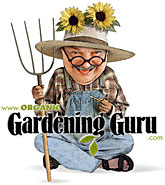I grew up in an apartment in Manhattan, so anything green seemed natural to me. It’s only much more recently that I’ve come to see lawns as man-made objects imposed on the environment—often an unforgiving and unreceptive environment.
Then Eric Vinge of Planet Natural asked me to write an article on organic lawn care. Writing that article (A Home-Owner’s Guide to Organic Lawn Care: Maintaining a Chemical-Free Lawn) was my education in lawn-care pesticides and other chemicals, and it was quite a class. Obviously, I started with a strong bias towards the organic point of view. But I have a strong skeptical streak, and I decided to trace every claim about rising cancer rates and endocrine disruption, about tracked-in chemicals, volatile organic compounds (VOCs) and the rest to either a university or a government study.
You know what I found? It was all true. All those claims about contaminated well-water and streams, the danger of childhood exposure, reproductive disorders—they’re all true.
This show is an attempt to share some of what I learned.
Next week’s interview with Evelyn Hadden, author of Beautiful No-Mow Lawns: 50 amazing lawn alternatives, provides lots of information about what you can have instead of grass—including a terrific conversation about providing play possiblities for children.
Both of this week’s guests describe the personal experiences that led them to their environmental work on lawns. In the case of Paul Tukey, it was the headaches, nausea, and other ailments that started afflicting him every spring after years working as a lawn-care professional. It was only later that he associated the same chemicals that made him ill with his Cristina Milesi’s story is less dramatic but no less telling. Italian by birth, she arrived in Missoula, Montana for graduate school, looked at the brown hills above the green lawns of the town, and said, Something’s not right here.
Paul has transmuted his own health problems into a broad understanding of the health risks associated with conventional lawn products, and he peppers our interview with telling stories and statistics. For instance, he tells me that Canadians are “way ahead of us” (Americans) as far as restricting homeowner use of dangerous lawn chemicals; 82% of them live in areas that have banned the cosmetic use of synthetic pesticides. Paul is a powerful speaker and a tireless advocate, energized in part by his son’s severe ADHD, which he suspects could well have been caused by indirect exposure to lawn chemicals back when the boy was a toddler.
After the interview, I checked to see if there is indeed a known relationship between ADHD and pesticides. And indeed, the evidence is mounting, but most of the studies are quite recent; two of the most telling were published in the spring of 2010 and the autumn of 2011. (Both are listed in the More Links and References section below.) Paul’s son is now seventeen. Back when he was a susceptible toddler, this research had not yet been done.
I had sought out Cristina because back in 2005, she published one of the first scientific estimates of how much lawn exists in the U.S.–the lower 48 states, at least. Along the way, she also produced the very first map of impervious surfaces–all that concrete, asphalt, roofs, and anything else that won’t absorb water. Both are important for all kinds of environmental studies, so I got curious: just how did she do it, anyway?
So in this interview Cristina explains not just how much turfgrass we grow (between 27 and 40 million acres–over three times as much land as is used to produce irrigated corn) and how much water we dump on it (up to 75% if you live in a “crazy place like Phoenix, Arizona or Las Vegas, Nevada”), but whether lawns act as a carbon sink or not (yes, but only if they’re really well cared for and only a little) and finally, how she made those maps (which I’m not going to try to summarize in a parenthetical note.)
Call me obsessive or possibly paranoid, but I actually checked some of Cristina’s numbers. Yeah, I know; I think I can out-compute a NASA scientist? Not likely. Still, I find it hard to take anyone’s word for anything, so I spent a morning tracking down the amount of irrigated corn grown in the U.S., converting hectares to acres to square kilometers, and so on. The results? Either she and I just happened to make exactly the same mistakes, or she was right: there really are over three times as many acres of lawn in the U.S. as there are acres of irrigated corn.
That’s a lot of lawn. And much of it gets dosed with the chemicals that made Paul Tukey sick, and perhaps permanently injured his son.
There’s got to be a better way.
– author, lecturer, activist, film-maker, T.V. show host
– 2006 winner of American Horticultural Society’s Horticultural Communication Award for lifetime achievement.
Website: paultukey.com
Blog: SafeLawns.blog Daily Q & A
Books:
- The Organic Lawn-Care Manual: A Natural, Low-Maintenance System for a Safe, Beautiful Lawn, 2007
- Tag, Toss & Run: 40 Classic Lawn Games co-authored with Victoria Rowell, 2012
Videos, movies
- People, Places & Plants – HGTV television show, 2003-2007—DVD set available on Paul’s website.
- “Making the Organic Lawn Care Transition,” 2007—a series of brief videos available free on the SafeLawn.org website as How-To Videos.
A Chemical Reaction, 2009—the story of Dr. June Irwin’s successful 6-year campaign to get her town to ban the cosmetic use of lawn pesticides and herbicides. In 1991, Hudson, Quebec became the first town in North America to enact such a ban.
– Senior Research Scientist, University of California at Monterey Bay, NASA Ames Research Center
– member of the NASA Climate Science Adaptation Investigators team
Website: Ecocast
Selected articles and presentations*
“Regional Climate Pojections: What the Science Says” —presentation for Association of Women in Water, Energy and Environment, May 2011
– looks like power point, but downloadable as PDF
– lots of useful (and scary) graphs, maps, etc.
“Mapping and modeling the biogeochemical cycling of turf grasses in the United States” Milesi, C. et al. 2005. Journal of Environmental Management. Vol. 36, No. 3, pp. 426–438.
– This is the article that led to interviews and/or articles in everything from Forbes to U.S.News.
“Assessing the Extent of Urban Irrigated Areas in the United States” Milesi, C. et al. 2009. Chapter 8 in Remote Sensing of Global Croplands for Food Security, ed. Prasad Thenkabail et al.
“Looking for Lawns” by Rebecca Lindsey, Nov. 8 2005, feature article about Milesi’s work on NASA’s Earth Observatory site.
– Cristina recommended this article to me as the best overview of her work for the lay reader.
“Study: A Link Between Pesticides and ADHD.” By Alice Park. Time Monday, May 17, 2010.
“Pesticides Linked to ADHD in Children” Environmental Protection Blog Posted by Laura Williams on Sep 13, 2011.
*Very selected.

 Subscribe to RSS feed
Subscribe to RSS feed



the podcast is truly useful. Cultivating organic lawns are need of an hour. Americans just love them
Keep working on your subject.I am gardener(owner) of Himalayan Gardens,I love to do indoor outdoor gardening but I appreciate your what you are doing.
Best of luck.
Contamination is true, and lawn being affected is true too…… nice post.
Intriguing! What can we do about the sports fields where our youth are playing football, soccer, baseball, lacrosse, etc? If there is a link to ADHD and our kids start organized sports as early as 3 that could help explain an epidemic! I do think the chemicals in our American processed foods is a major contributor.
Just wanted to say I enjoyed the podcast, nice post too. Very interesting points
You’ve put a lot of effort into this post and podcast. Other than getting the word out there, do you work at changing people’s mindset about their precious lawns? Organize protests, lobby the legislature, etc.
There are so many chemicals in industrial lawns and landscaping it’s enough to make our pets sick! This is a serious post that others should be aware of. Glad I found ya!
Such an interesting post – there definitely needs to be more studies on this. As John Pinto has said – if these chemicals are harmful to are pets, what makes us think they’re good for humans?
Interesting to read your story. Do it well with confident.
This is certainly interesting. Is there any risk to US(!) from sitting out in the garden? Thanks, Paul @ Raw Garden
You’ve put a lot of effort into this post and podcast. Other than getting the word out there, do you work at changing people’s mindset about their precious lawns? Organize protests, lobby the legislature, etc.